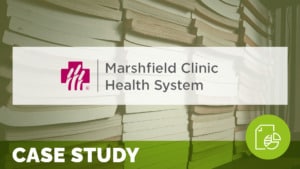Environment & Hospitality: 4 Considerations for Creating an Excellent Experience for Patients and Families

This is the third blog in a series of eight by The Beryl Institute’s Global Patient & Family Advisory Board (GPFAB). The intent of this series is to present our perspective on patients’ and families’ lived experience for each of the strategic lenses of The Beryl Institute’s Experience Framework. The Experience Framework is a community-developed tool that acknowledges the integrated nature of healthcare experience and is comprised of eight strategic lenses that help shape patient experience efforts.
Environment & Hospitality: The Why
The space in which a healthcare experience is delivered and the practices implemented to ensure a positive, comfortable and compassionate encounter must be part of every effort.
Impact Statement
When the environment and hospitality practices of a healthcare organization focus on comfort and compassion, patients and families have the opportunity to focus on the most important part of their healthcare journey, saving their energy for what really matters to them.
Commentary
Building trust and putting patients and families at ease when they visit a healthcare facility goes a long way toward creating an excellent experience. A warm welcome and smiling face are key ingredients to make that happen. Dirty floors and overflowing trash cans will immediately create doubt before they even meet a doctor or nurse. Some things to consider:
- An impression will be made before the patient and family enter the door.
Even a parking lot or garage in disarray will be noticed. Be sure sidewalks are pressure washed. Signage should help visitors easily find the entrance. Parking attendants and staff at the information desk should be trained to warmly welcome people to the facility. - Hospitality must extend beyond the clinical team.
Visitors may encounter a multitude of people before they meet any clinical providers. Housekeeping and maintenance personnel should have clean attire, proper badging and know how to warmly welcome guests. An initial impression will be formed before the nurse or doctor meets the patient. Assuring that everything goes well before the visit is most beneficial. - The environment should consider all five senses.
There’s much discussion about what can be seen. Positive messages, natural lighting and living plants can create feelings of warmth and caring. Soft music can put people at ease. Smell is sometimes overlooked and can raise red flags. Choosing appropriate scents for the facility can be a low-cost investment that can really help lessen anxiety. - Ask your PFAC to provide feedback on the environment and hospitality.
Provide time for patient and family advisors to tour your facility. Have them review signage to assure accuracy. Take photos of dirty floors and areas that may need repairs or paint. Staff probably won’t recognize them, so they can ask for directions and share whether staff were accommodating and welcoming. Make a list of what they find to provide to hospital leaders.
As the evolution from patient experience to human experience continues, consider the environment in employee breakrooms and other areas of your facility that may be more staff-facing. Consider what feelings are being created there and how to extend reminders about your organization’s mission and service standards.
Assuring that staff feel as valued as the patients and families you’re hoping to bring through the doors will build trust with everyone.
About Jeff Cousins
Jeff Cousins spent more than 25 years in the TV news industry. During that time, his wife, Paige, gave birth to their son, J.P., who was diagnosed with holoprosencephaly, a form of cerebral palsy. J.P. is now on the brink of adulthood and the couple is navigating the challenges of finding care for him as he transitions out of pediatric care. Jeff now works full-time at AdventHealth for Children in Orlando, Fla. as a family-centered care consultant in patient experience. He oversees the hospital’s five family advisory councils and is a member of The Beryl Institute’s Global Patient and Family Advisory Board. He is a co-author of the Institute’s family experience guidebook, “We are not Visitors: Working Together with Family Caregivers and Care Partners.”
Related content
-
 Environment & Hospitality | Staff & Provider Engagement
Environment & Hospitality | Staff & Provider EngagementPatient Experience Coaching in Ambulatory Care
Sharing is caring. Read how Marshfield Clinic Health System improved patient experience in its medical offices through observation and coaching of care teams. Learn how Patient Experience Coaches, a novel concept in ambulatory care settings, followed the patient journey through their clinics and identified improvement areas that focus on retention and recruitment of ambulatory care
Learn more -
 Environment & Hospitality
Environment & HospitalityIn-Language Communication Improves Patient & Family Experience
In this case study, a children’s hospital shares how a partnership with a language interpretation service company enabled their organization to better support the diverse languages of those they serve through improved communication.
Learn more -
 Environment & Hospitality | Patient Family & Community Engagement
Environment & Hospitality | Patient Family & Community EngagementGoing From an Academic Medical Center to a Community Hospital: Patient Experiences with Transfers Going from an academic medical center to a community hospital: Patient experiences with transfers
Learn more
